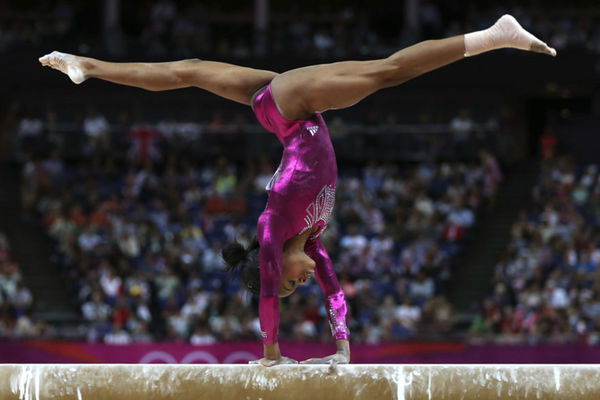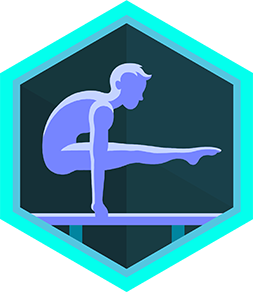Create a beam routine
Design and practice a short balance beam routine with safe skills, plan sequence steps, rehearse balance and transitions, and perform with a spotter.



Step-by-step guide to create a beam routine
6 Gymnastics Skills You Should Perfect on Beam
Step 1
Gather the materials listed above and bring them to a clear space in your home.
Step 2
Put on your comfortable clothes so you can move easily.
Step 3
Clear a flat area on the floor so there is room to make and practice your beam.
Step 4
Make a straight beam on the floor by sticking a long line of tape about as wide as a finger.
Step 5
Place the yoga mat or folded towels next to the tape so you have soft padding beside the beam.
Step 6
Ask your spotter to stand next to the beam and explain they will watch and help keep you safe.
Step 7
Write down a short routine of 4 to 6 safe moves such as a two-foot walk one-leg balance gentle turn squat-to-stand and a finishing pose.
Step 8
Practice each move on its own three times while your spotter stands nearby to help if you wobble.
Step 9
Practice moving between two moves slowly so your transitions are smooth while the spotter stays close.
Step 10
Do your whole routine three times with your spotter watching and ready to assist if needed.
Step 11
Share your finished creation on DIY.org.
Final steps
You're almost there! Complete all the steps, bring your creation to life, post it, and conquer the challenge!


Help!?
What can we use if we don't have tape or a yoga mat?
If you don't have tape, make the beam with chalk on hard floors or a length of string or a row of closely spaced pillows, and if you lack a yoga mat use a folded blanket or towels as the padding beside the beam.
The tape keeps peeling up or I keep wobbling — how can we fix that?
If the tape peels, press it down firmly or switch to painter's or masking tape, and if you wobble, widen the beam slightly, have your spotter stand very close to hold your hand, or move the yoga mat/towels right next to the tape for extra support.
How should we change the routine for younger or older children?
For younger children use 2–3 simple moves from the '4 to 6 safe moves' list (two‑foot walk, supported one‑leg balance), a wider beam, and thicker padding, while older kids can use a finger‑width beam, add more moves, longer holds, and small turns or hops.
How can we make the routine more fun or special before sharing it on DIY.org?
Decorate the tape, add background music, time your three full runs to show progress, include a theme or costume, or introduce a soft prop like a ball to personalize the routine before sharing on DIY.org.
Watch videos on how to create a beam routine
5 Gymnastics Drills You Can Do on your Home Beam
Facts about gymnastics for kids
⏱ Beginner-friendly beam routines are short—about 30–60 seconds—and usually include a mount, balance poses, simple turns or leaps, a small acrobatic skill, and a dismount.
🛡 During practice, a trained spotter stands close to help guide or catch a gymnast and greatly reduces the risk of injury.
🏅 Nadia Comăneci earned the first perfect 10 in Olympic gymnastics at the 1976 Montreal Games, making history.
🤸 Simone Biles has multiple gymnastics skills named after her for their difficulty and creativity — she’s pushed the sport’s limits.
📏 The competition balance beam is 5 meters long, only 10 cm (about 3.9 in) wide, and sits around 1.25 m (4 ft) above the floor.
How do I help my child design and practice a short balance beam routine?
What materials and equipment do I need to create a safe balance beam routine?
What ages is balance beam routine practice suitable for?
What safety precautions should I take when my child performs a balance beam routine with a spotter?


One subscription, many ways to play and learn.
Only $6.99 after trial. No credit card required



